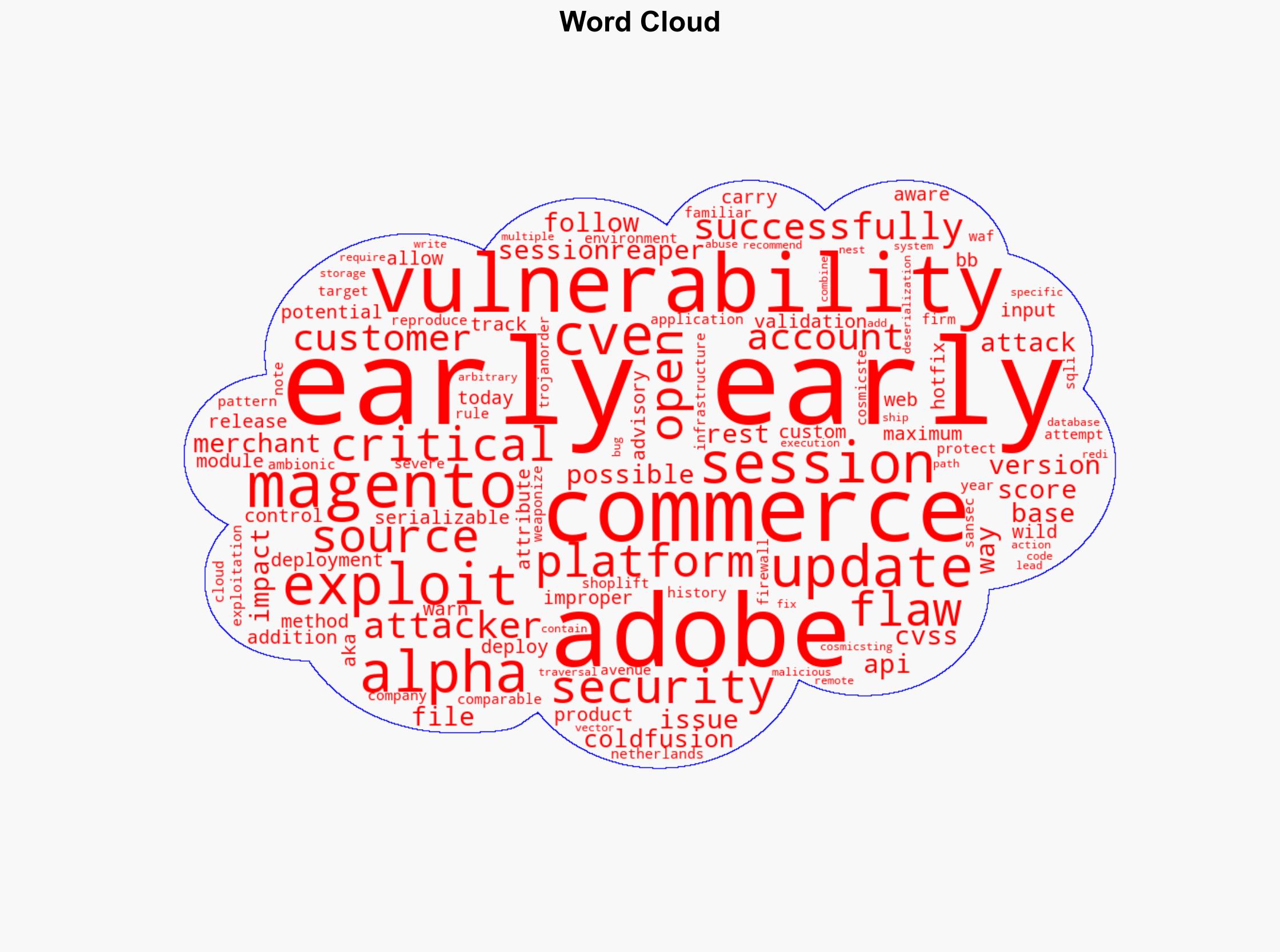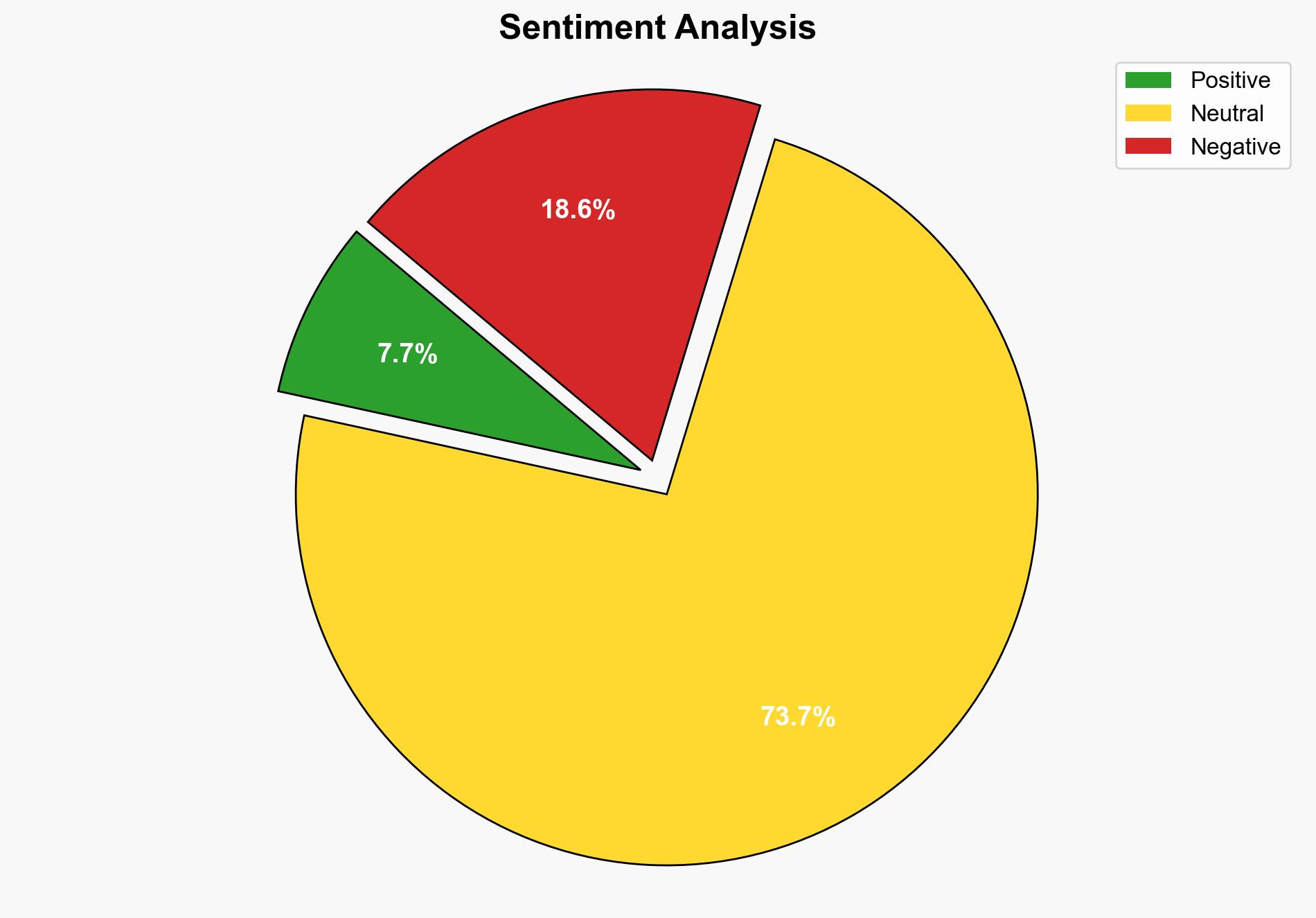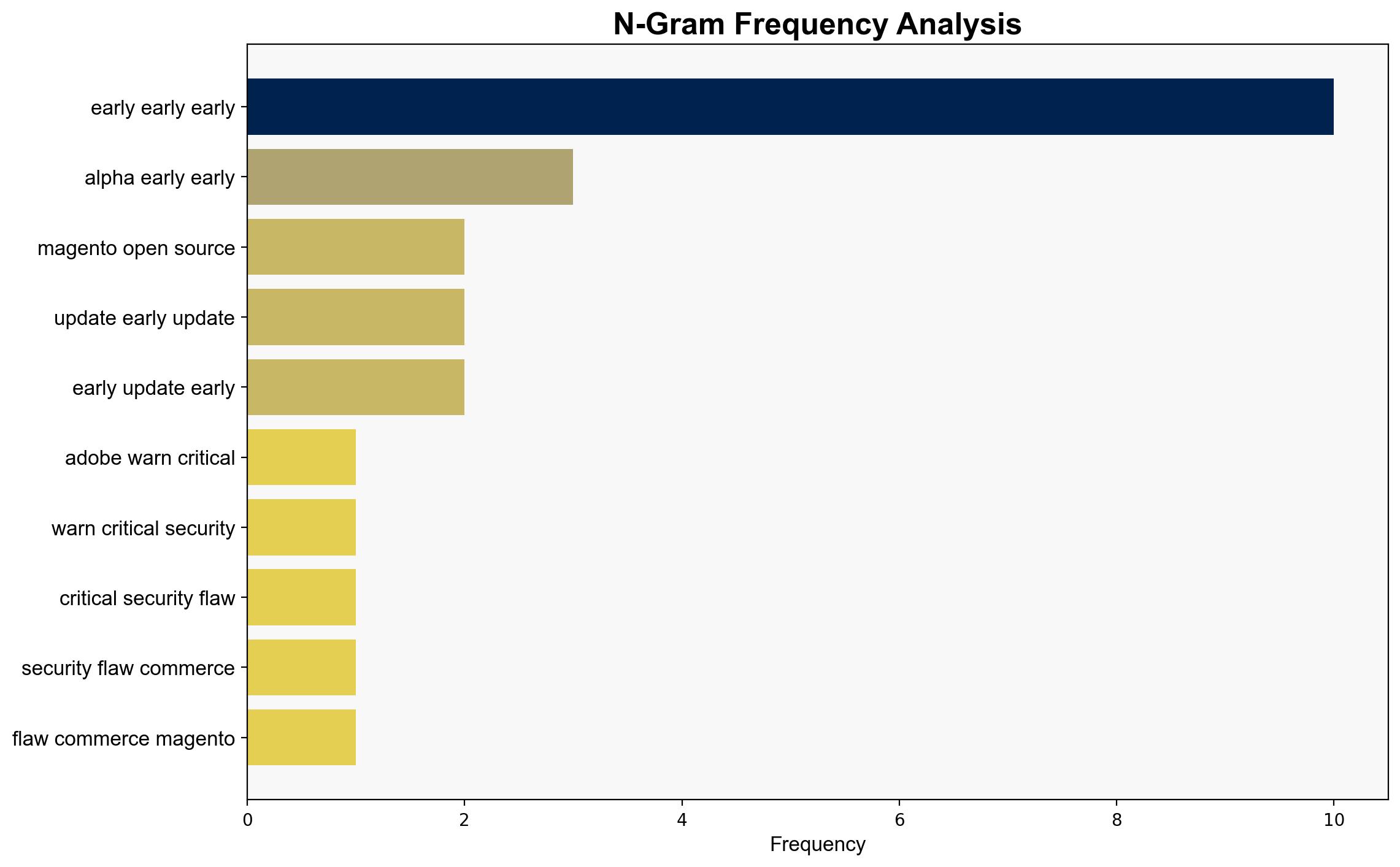Adobe Commerce Flaw CVE-2025-54236 Lets Hackers Take Over Customer Accounts – Internet
Published on: 2025-09-10
Intelligence Report: Adobe Commerce Flaw CVE-2025-54236 Lets Hackers Take Over Customer Accounts – Internet
1. BLUF (Bottom Line Up Front)
The most supported hypothesis suggests that the CVE-2025-54236 vulnerability in Adobe Commerce and Magento platforms poses a significant risk of account takeovers due to improper input validation. The strategic recommendation is to immediately implement the provided hotfix and deploy a web application firewall (WAF) rule to mitigate potential exploitation attempts. Confidence level: High.
2. Competing Hypotheses
Hypothesis 1: The vulnerability is primarily a result of improper input validation, allowing attackers to exploit the Adobe Commerce platform to gain control over customer accounts. This hypothesis is supported by the CVSS score indicating critical severity and the advisory from Adobe acknowledging the flaw.
Hypothesis 2: The vulnerability is part of a broader, coordinated attack strategy targeting multiple e-commerce platforms, leveraging a combination of known vulnerabilities such as session deserialization bugs and remote code execution vectors. This hypothesis considers the historical context of similar attacks and the potential for a more complex threat landscape.
3. Key Assumptions and Red Flags
– Assumption for Hypothesis 1: Adobe’s advisory and the CVSS score accurately reflect the severity and nature of the vulnerability.
– Assumption for Hypothesis 2: There is a coordinated effort to exploit multiple vulnerabilities across platforms, which may not be fully supported by current evidence.
– Red Flag: Lack of detailed information on the exploitation in the wild and potential underreporting of incidents.
– Blind Spot: The possibility of undisclosed vulnerabilities that could be exploited in conjunction with CVE-2025-54236.
4. Implications and Strategic Risks
The exploitation of this vulnerability could lead to significant financial losses for affected merchants, damage to brand reputation, and loss of customer trust. There is a risk of cascading effects if attackers leverage this vulnerability to access broader network systems or sensitive customer data. Geopolitically, the exploitation could be used by state-sponsored actors to disrupt e-commerce operations in targeted regions.
5. Recommendations and Outlook
- Implement the hotfix and deploy a WAF rule immediately to protect against exploitation attempts.
- Conduct a comprehensive security audit of e-commerce platforms to identify and patch other potential vulnerabilities.
- Best Case: Quick mitigation of the vulnerability with no significant exploitation incidents.
- Worst Case: Widespread exploitation leading to major financial and reputational damage.
- Most Likely: Limited exploitation attempts with manageable impact due to proactive mitigation measures.
6. Key Individuals and Entities
– Adobe Systems Incorporated
– Sansec, a cybersecurity company based in the Netherlands
7. Thematic Tags
national security threats, cybersecurity, e-commerce security, vulnerability management




